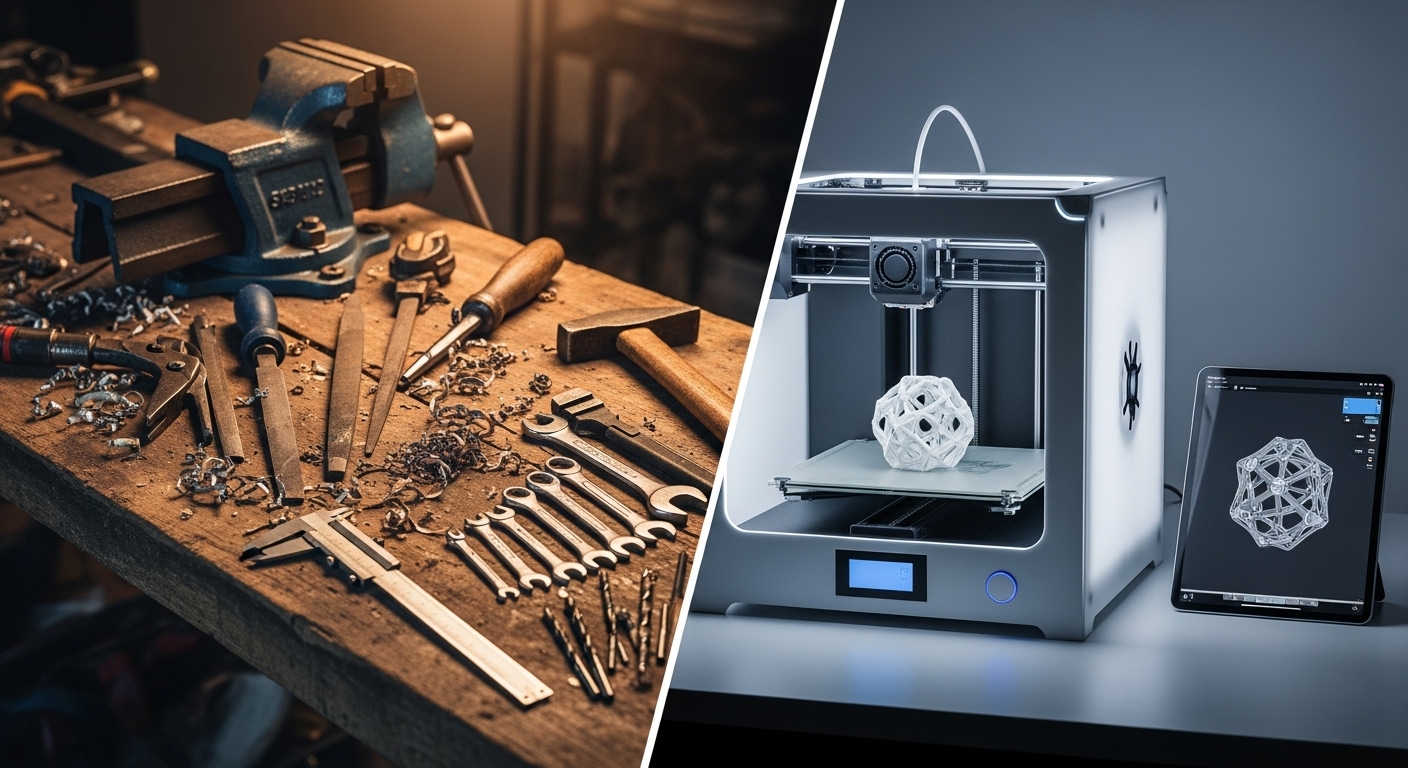Introduction
In today’s fast-paced production landscape, businesses face a critical choice: embrace new technologies like 3D printing or stick with tried-and-true traditional manufacturing methods. Each approach offers unique advantages and trade-offs, especially when it comes to cost, speed, and sustainability. This article breaks down these factors to help you make an informed decision for your manufacturing needs.
Cost Comparison
✅ 3D Printing: Low Upfront Costs, Great for Small Batches
- No tooling required: 3D printing eliminates the need for molds or custom jigs, saving thousands in upfront investment.
- Best for prototyping and low-volume runs: Unit costs stay relatively consistent regardless of batch size.
- Cost per part decreases slowly: Unlike mass manufacturing, economies of scale are limited.
🔧 Traditional Manufacturing: Economies of Scale
- High initial setup costs: CNC machining and injection molding require custom tooling and programming.
- Low cost per unit at scale: Once the tooling is in place, producing thousands of units is much cheaper per piece.
- Better for mass production: Ideal for products with predictable, high-volume demand.
💡 Verdict:
3D printing is more cost-effective for custom parts, prototypes, and low-volume production. Traditional manufacturing wins for large-scale production.
Speed Comparison
🚀 3D Printing: Rapid Prototyping and Agile Production
- Design-to-print in hours: CAD files can be printed immediately without waiting for tool setup.
- Faster iteration cycles: Modify and reprint without costly delays.
- On-demand manufacturing: Ideal for tight deadlines or just-in-time production.
🏭 Traditional Manufacturing: Longer Lead Times
- Time-intensive setup: Tooling, molding, and machining setups can take days or weeks.
- Batch scheduling delays: Production slots often need to be booked in advance.
- Shipping and storage: Finished goods must be warehoused or shipped in bulk.
💡 Verdict:
3D printing provides faster turnaround times and supports agile workflows. Traditional manufacturing is slower but more efficient once scaled.
Sustainability Comparison
🌱 3D Printing: Leaner and Greener
- Material efficiency: Additive manufacturing only uses the material needed for the part.
- Lower waste: No excess from cutting or subtracting materials.
- Localized production: Reduces carbon footprint by enabling decentralized manufacturing.
🏗️ Traditional Manufacturing: Waste and Emissions
- High waste generation: Subtractive methods discard material as scrap.
- Large carbon footprint: Often involves global supply chains and mass shipping.
- Energy-intensive processes: Machining, molding, and casting consume more energy.
💡 Verdict:
3D printing is generally more sustainable, especially for localized or on-demand production. Traditional methods require greener reform to compete.
When to Use Each Method
| Use Case | Recommended Method |
|---|---|
| Prototypes and MVPs | ✅ 3D Printing |
| One-off or custom items | ✅ 3D Printing |
| Mass production | 🔧 Traditional Manufacturing |
| Fast product iterations | ✅ 3D Printing |
| Simple, high-volume parts | 🔧 Traditional Manufacturing |
| Eco-conscious product design | ✅ 3D Printing |
Conclusion
While both 3D printing and traditional manufacturing have their strengths, your ideal choice depends on your business goals. If you’re looking for speed, agility, and customization, 3D printing offers unmatched flexibility. If you’re aiming for high-volume production at the lowest cost per unit, traditional methods may still be your go-to.
At PrintVision3D, we help clients leverage the best of both worlds. Whether you’re prototyping a new design or scaling production with hybrid workflows, our expertise ensures you get the right result—efficiently, affordably, and sustainably.


